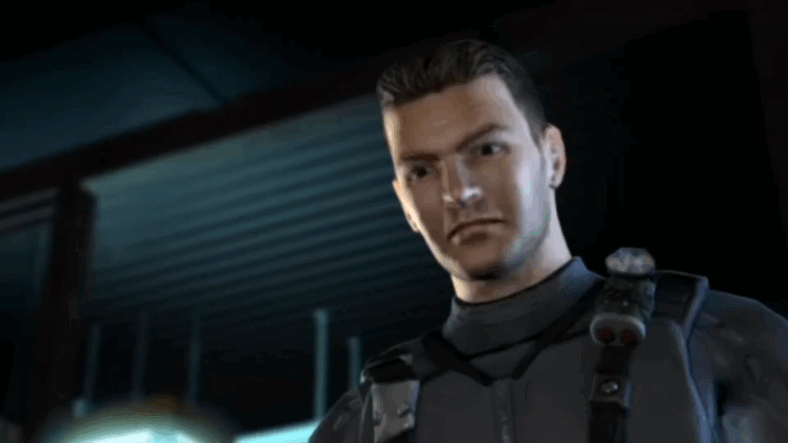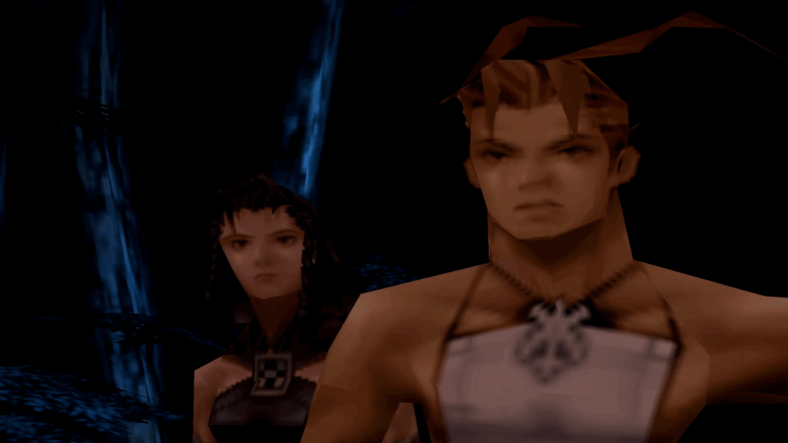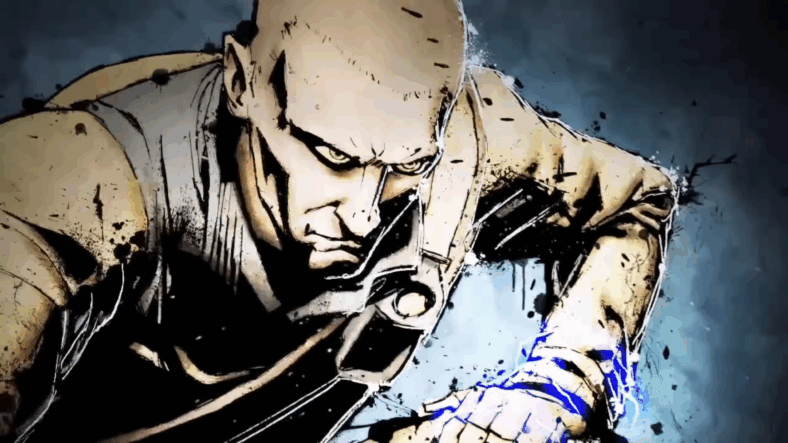
Including both home and handheld devices alike, all 14 PlayStation consoles hold a special place among gamers, and the titles that came with each of these systems are no different; main reason behind popular PlayStation Originals that have unfortunately gone dormant are so deeply missed on the latest hardware.

The positive reception of remakes such as Final Fantasy IV, Resident Evil 2 and Resident Evil 4, as well as The Last of Us Part 1, among others, has shed light on the slew of PlayStation Originals that have gone on hiatus over the years but have unfinished business with fans. From cult classics, with sequels stuck in development hell, to those simply left behind by market trends, here is a detailed look at the best games — across different generations of PlayStation hardware — whose sequels are long overdue.
Tomba! (1998), Whoopee Camp

Created by Tokuro Fujiwara (Ghosts ‘n Goblins) after leaving Capcom, Tomba! is a side-scrolling platformer masterpiece that put developer Whoopee Camp on the map. In the eponymously named title, players control a pink-haired feral kid named Tomba, who is on a mission to fight an army of mischievous pigs and save his world from destruction. With its vibrant setting, addictive sidequests, puzzles, and nonlinear storyline, Tomba! redefined 2D/3D side-scrolling.
The western version was well received, although it couldn’t beat its original Japanese counterpart, whose ending with ‘ Que Sera, Sera’ has become a timeless reminder of the game’s simple but memorable experience. Unfortunately, the studio closed down shortly after the release of Tomba! 2: The Evil Swine Return, the game’s only sequel. The franchise now thrives on fan-fueled hype, and a remaster of the first entry released on multiple platforms in 2024; reviving the interest, and making it ripe for a sequel.
RELATED: The Best Games That Actually Deserve To Be Remastered
The Legend of Dragoon (1999), Japan Studio

This is one of the unluckiest PlayStation Originals, having been unfairly compared to Final Fantasy IV upon release when it actually offered something better in its own right. The Legend of Dragoon follows a young swordsman, Dart, who — while on a mission to avenge the destruction of his homeland — meets a mysterious group of warriors known as Dragoons, who can turn into dragons wielding immense power. On paper, it is a traditional RPG relying on turn-based combat to unleash up to three characters in combat.
However, the game also features a real-time combo attack system known as Addition, which is almost similar to a Judgement Ring. The Legend of Dragoon was positively received in North America and Europe ,and continues to enjoy a sizeable following despite not receiving sequel in over two decades. With remakes of Final Fantasy and other RPG classics doing so well, The Legend of Dragoon could finally enjoy the success it deserves if it gets a sequel with a modern touch.
Fat Princess (2009), Titan Studios

With games like Overwatch and Fortnite dominating the online gaming space, a modern sequel of Fat Princess could easily become the most popular online multiplayer RTS on PlayStation. Launched in 2009, Fat Princess follows a range of quirky stories with dry humor. In the now-famous ‘Rescue mode,’ players join a team of 16 players in a battle to save a princess from an opposing team’s castle while keeping the other team’s princess from being rescued.
The highlight of the game is cake slices — which, when fed to the princess — make her heavier; thus harder to rescue by either team. Fat Princess gained instant success, especially in North America and Europe. However, the game’s developer, Titan Studios, became defunct in 2011. Though Sony tried to revive the franchise in 2015 with Fat Princess: Adventures, this new entry was nothing like the original; leaving fans craving for a proper, more faithful sequel.
Syphon Filter (1999–2007), Bend Studio

With a balanced combination of third-person gunplay and high-stakes storytelling, the first three Syphon Filter games were stealth-action masterpieces in the PlayStation Originals label. Syphon Filter follows special agents Gabriel ‘Gabe’ Logan and Lian Xing on a high-level covert mission to stop a terrorist from unleashing the titular biological weapon. The first three entries in the series seamlessly combine into a deeply grounded espionage saga that ruled stealth gaming on PlayStation from 1999 to 2001.
To the dismay of fans, the franchise took a drastic turn in 2004 with Siphon Filter: The Omega Strain, which gave up most of the simple but realistic touches of the original. Similarly, subsequent releases failed to impress; resulting in the franchise going dormant after the release of Siphon Filter: Logan’s Shadow in 2007. With better game engines and incredible graphics being adopted on PS5 and PlayStation Live Service, a new Siphon Filter would quickly restore the franchise’s lost glory.
Vagrant Story (2000), Square

Considered Square’s best ever game upon release, Vagrant Story remains one of the most visually appealing RPGs of all time on the PlayStation Originals catalogue. The game is set in the kingdom of Valendia and follows the adventures of agent Ashley ‘Riskbreaker’ Riot, who gets framed for murder while on a mission to investigate a cult in the cursed city of Lea Monde. With stunning cinematics, multiple camera angles for each scene, and a story told in a non-linear manner, the whole game feels like a movie.
Besides its deep gameplay, well-grounded storyline, and detailed gothic settings, Vagrant Story‘s true highlight is the well-choreographed fight scenes that were way ahead of their time. The game was an instant hit and continues to enjoy a wide global following. Regrettably, Square Enix has never released a sequel. However, with the improved graphics of the latest PlayStation hardware, a remaster or a modern Vagrant Story sequel would be a welcome addition.
RELATED: 3 Times Western Video Games Got Japanese Culture Totally Wrong
Heart of Darkness (1998), Amazing Studio

Andy, a nyctophobic boy, has to come face to face with his worst nightmare when his dog, Whisky, is kidnapped by shadow creatures, from the alien world of Darkland, during a solar eclipse. While the story isn’t the deepest, Heart of Darkness makes up for it with engaging gameplay. Featuring one of the toughest difficulty curves of any PlayStation Originals platformer, this game includes endless real life-looking challenges that include climbing, swimming, and jumping; most of which end with Andy dying, hence the addiction.
The game grows on players, as it proceeds with better cinematics that borders on horror-film aesthetics; where Andy’s journey changes from a simple children’s story into a full-blown superhero quest. Though failing to make enough money to save developer Amazing Studios from closure, Heart of Darkness was an instant hit. With thriving narrative-driven platformers like Limbo and Planet of Lana, a modern 2.5D sequel of Heart of Darkness could be a total game-changer.
Infamous (2009–2014), Sucker Punch

Largely reshaping the PS3 era, with a GTA-style open world, combined with eccentric superhero storylines — making it a major teen sensation — Sucker Punch’s inFamous introduces players to the morally ambiguous Cole MacGrath. The series follows different superheroes based in different alternate versions of US cities as they make the choice to either use their newly-acquired powers for good or evil.
While the moral ambiguity makes the gameplay interesting through the open-world mechanism, inFamous also sets a new tone for cinematics with its gritty urban settings. The games are still playable on PlayStation, although they feel a little outdated; with the last one making its debut over a decade ago. After the success of its urban open-world adventure counterparts like Spider-Man 2, another entry in the inFamous series could set the pace for the next generation of the genre.
Heavenly Sword (2007), Ninja Theory

Heavenly Sword is another early cinematic action hit for the PS3; one that never received a sequel despite retaining a huge cult following nearly two decades later. Developed by Ninja Theory, the game follows a powerful female protagonist named Nariko, who wields the mysterious titular sword believed to have come from a heavenly deity. In the game, she takes on the tyrannical King Bohan and his armies, who want to destroy her clan and reshape her world in their image.
The story has a deep emotional twist, since the sword is said to drain the life of whoever wields it; making it seem as if Nariko’s fate was sealed from the start. Although its gameplay is disturbingly short, Heavenly Sword puts detail into every battle scene with its choreography and physics-based combat. Rumors emerged that a sequel to this PlayStation Originals hit was in development, only to be canceled before it ever saw the light of day. However, the success of Hellblade II, and other similar games in recent years, has shown that it might be time for PlayStation to give Heavenly Sword another shot.

Media. Vision’s Wild Arms redefined JRPGs, as a whole, by introducing firearms in its combat sequences; a feature that turned the game into an instant hit back in the day. This particular PlayStation Originals title was intended as Sony’s answer to the growing popularity of the JRPG genre, although its release came a little too close to Final Fantasy VII. Set in the fictional planet of Falgaia, Wild Arms follows different teams of adventurers — known as ‘Dream Chasers’ — on missions to save the planet from various threats.
The ability to use firearms — rather than the more traditional swords and arrows — made Wild Arms a different kind of JRPG that resonated with many gamers around the globe. Unfortunately, after the lukewarm reception of 2007’s Wild Arms XF for the PSP, the franchise went dormant. The creators have since released a crowdfunded spiritual successor in the form of Armed Fantasia, though it is unlikely to take the place of a true Wild Arms sequel.
RELATED: 8 Best Video Games Based On TV Shows: Ranked
Gravity Rush (2012–2017), Japan Studio

Gravity Rush tells the story of Kat, a young amnesiac woman, who wakes up in the city of Hekseville and quickly embarks on a mission to save the city and its people from the mysterious Nevi. Kat has the power to manipulate how gravity works on her, allowing her to climb vertical surfaces, walk on ceilings, and semi-fly between locations, turning her into what feels like a Spider-Man game; were the hero be deprived of his webs, that is.
With its addictive gameplay and deeply rooted storyline, Gravity Rush was an instant hit on PlayStation Vita; becoming a fan-favorite. Unfortunately, Gravity Rush II (2017) was a commercial flop. With the shut-down of Japan Studio in 2021, hopes of a better-adapted sequel have been crushed. However, there is renewed interest in the franchise — with a Gravity Rush film coming up — and PlayStation could make it even better by releasing a faithful sequel to the game in due time.
NEXT: 10 Best ‘Under The Radar’ Marvel Video Games
More About:Video Games
发表回复